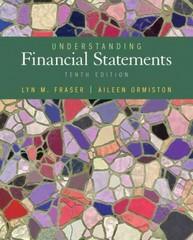Question
An instructor reads the article entitled Brainology by Carol S. Dweck describing the fact that intelligence is not fixed but your intellectual capacity can be
An instructor reads the article entitled "Brainology" by Carol S. Dweck describing the fact that intelligence is not fixed but your intellectual capacity can be nourished through learning new things, new experiences, struggles, and challenges. People who believe that their intelligence is fixed, known as a fixed-growth mindset, were discouraged from learning new things because of their fear of failure; they interpreted failure as evidence that they were stupid. People who believed that their intellectual capacity was something that they could develop, known as a growth mindset, tended to be more willing to learn new things and identify their failure, not as they were stupid, but that they needed to improve some specific skills. Students with this growth mindset were more likely to identify the specific skills they needed to improve and develop them so they could overcome the hurdles they cam across and achieve success. Carol's research showed that students with a growth mindset were more likely to persevere and achieve academic success. The instructor wanted to do her own research on the effects of a growth mindset on her own students. The instructor decides to introduce the concept to her students in hopes that the resulting test scores will be higher than their known exam average of 67%. Looking at the data below with a 0.05 level of confidence does it appear that taking on a growth mindset helped improve her students' success on their exams? The growth mindset students' exam scores are given below.
Exam Scores (%) 64.3 82.2 78.3 64.5 15.5 92.1 86.5 73.1 74.1 83.0 89.2 27.9 84.9 78.8 68.6 81.1 73.4 66.7 64.4 84.6 80.9 92.4 87.7 93.1 62.1
1. Calculate the following variables:
a. What is n? (the sample size)
b. What is the mean of this sample? (x)
c. What is the standard deviation of this sample? (s)
d. What is the instructor's claim in symbolic form?
2. Dave says that the critical value for this problem is z= 1.65. What mistake has Dave made?
_______________________________________________
What is the null hypothesis and alternative hypothesis (in symbolic form)?
a. H0: ______________________________
b. H1: ______________________________
4. Find the basics needed for a hypothesis test:
a. Is this a left-tailed test, right-tailed test, or two-tailed test?
b. What is the test statistic?
c. What is the purpose of calculating the test statistic?
d. What is the critical value given a level of significance 0.05?
e. What is the purpose of finding the critical value?
f. Draw a picture of the sample distribution (normal curve) and label the critical region, critical value, and test statistic.
5. Interpret the information of the hypothesis test:
a. What does it mean when the test statistic falls in the critical region?
b. Do we reject or fail to reject the null hypothesis?
c. What is our final conclusion? Does this data support Dr. Dweck's research? That is, is there sufficient evidence that a growth mindset increases test scores?
2. Create a diagram showing how you know when you will reject the null hypothesis. 3. Create a diagram showing how you know when you will fail to reject the null hypothesis.
Step by Step Solution
There are 3 Steps involved in it
Step: 1

Get Instant Access to Expert-Tailored Solutions
See step-by-step solutions with expert insights and AI powered tools for academic success
Step: 2

Step: 3

Ace Your Homework with AI
Get the answers you need in no time with our AI-driven, step-by-step assistance
Get Started


